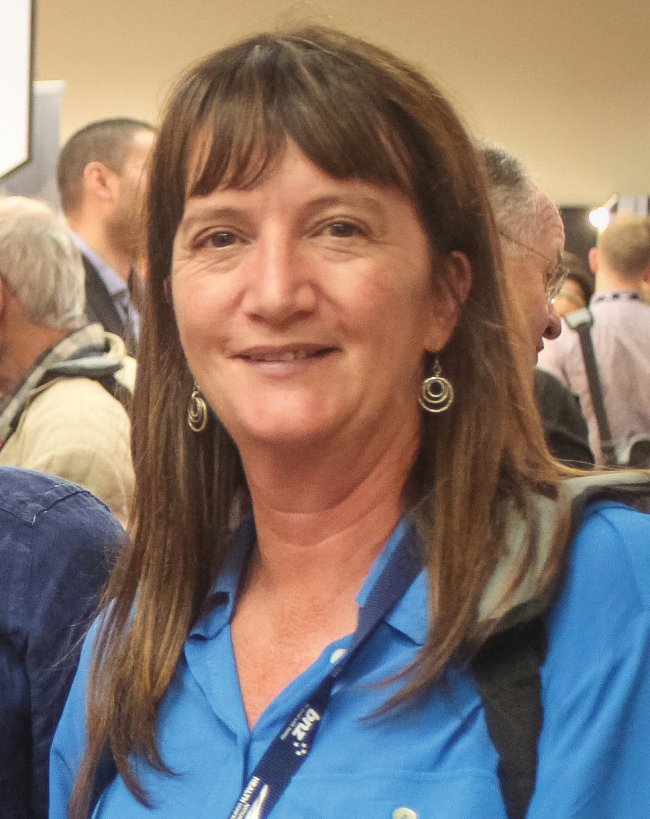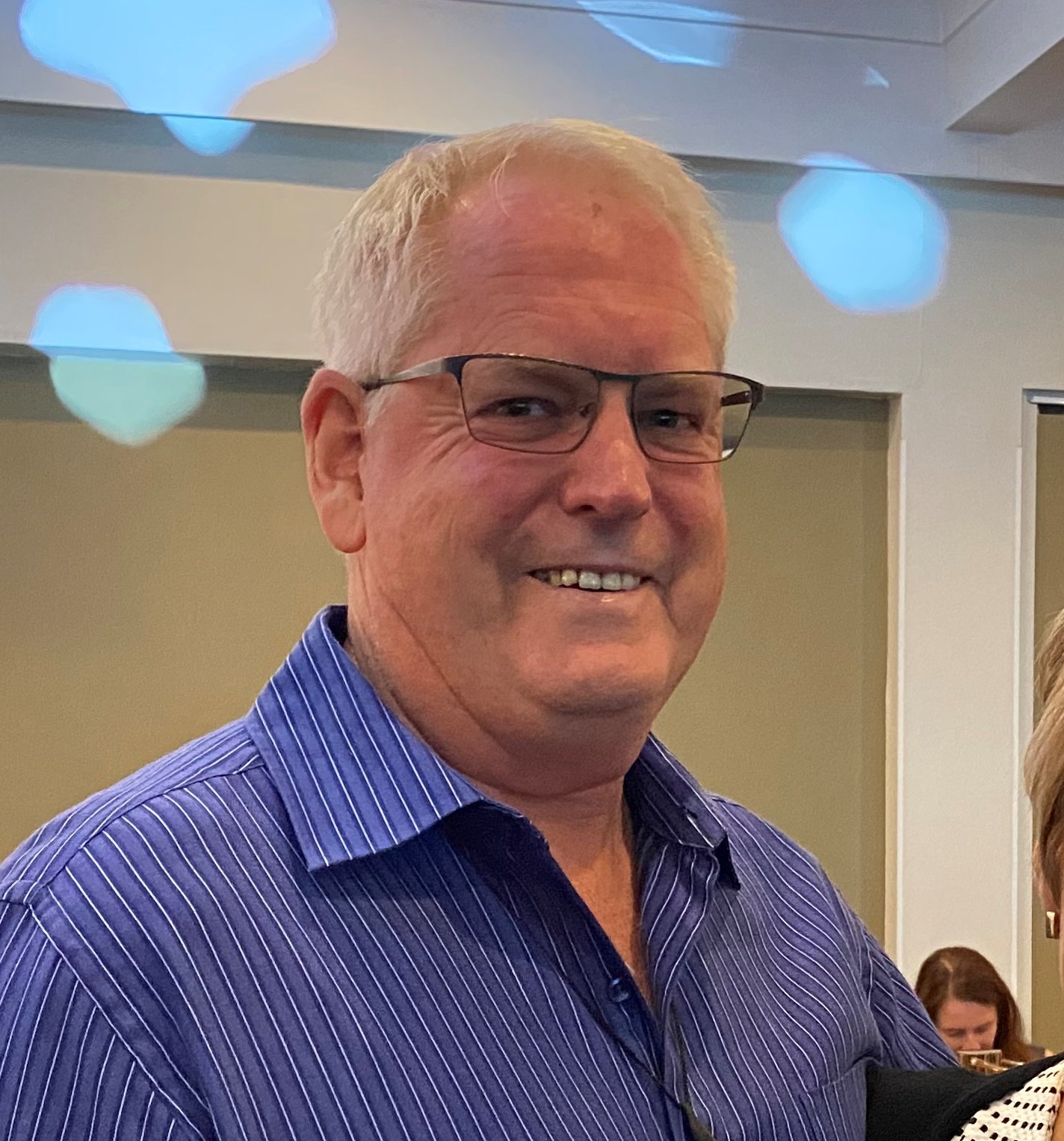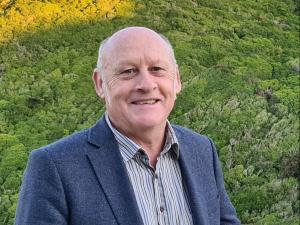Respiratory physician Lutz Beckert considers chronic obstructive pulmonary disease management, including the prevention of COPD, the importance of smoking cessation and pulmonary rehabilitation, and the lifesaving potential of addressing treatable traits. He also discusses the logic of inhaler therapy, moving from single therapy to dual and triple therapy when indicated, as well as other aspects of management
Common rural vision: Long-standing network gives way to new rural health advocate
Common rural vision: Long-standing network gives way to new rural health advocate

Rural health’s inclusion in the pae ora health reforms legislation is hailed as a first win for the new Hauora Taiwhenua Rural Health Network. Fiona Cassie finds out more about the new single voice for rural health
Children had their own conference “programme” back in the early days of the then Rural GP Network; pastoral care of isolated rural GP families was a major focus.
Three decades later the network, which evolved into an advocacy and support group for rural general practice and all rural health professionals, has voted itself out of existence.
From 1 July, staff, members and assets will complete the year-long transition to the new Hauora Taiwhenua Rural Health Network, an umbrella collective of nine chapters chaired by specialist GP Fiona Bolden.
At the start, the largest of these chapters is expected to be Rural General Practice/Te Whare Taumata o Ngā Tākutatatanga Taiwhenua.
Chapter spokesperson and specialist GP Grahame Jelley says both the chapter and the network will not forget their roots of supporting under-pressure rural health practitioners and their families.
“If we look back to the origins of RGPN, one of its strengths was its pastoral and peer support as well as the financial and sustainability advocacy,” Dr Jelley says. But he points to the gains already made by having Hauora Taiwhenua as a single voice focused on rural health and wellbeing.
In particular, he is pleased by the successful lobbying by the infant network about rural health being missed out of the Pae Ora (Healthy Futures) Bill. Health minister Andrew Little’s last-minute adding of rural into the bill, via a supplementary order paper earlier this month, is being claimed as a first win by Hauora Taiwhenua.
Grant Davidson, the chief executive who has been guiding the transition from old to new for the past year, doubts this would have been achieved if there had been “nine different voices saying slightly different things”.
The united voice is building on the efforts of network GPs like Pat Farry, Janne Bills, Martin London, Tim Malloy and many others in the early 1990s.
Former network deputy chair and Akaroa locum GP Howard Wilson recalls the network in those early days as being like a family network.
“We used to have a GP conference and also a children’s conference, as at the time we were all starting off with the network, we had young children. They used to hire some nannies to look after and amuse the kids.”
Alongside family pastoral care came rural health politics, which Dr Wilson says remains frustratingly similar.
“Thirty years down the track, we are still hitting our head against a brick wall trying to get them to understand the differences between rural and urban,” he says.
So he hopes drawing all rural health stakeholders together in one network will strengthen their case and voice.
Dr Davidson believes it is common sense to have a single voice for rural health when all parties have a common vision. With the health sector still absorbing the loss of NZMA, he says it also makes practical sense to have one management and administration team supporting rural health advocates and seeking funding.
Hauora Taiwhenua is absorbing the Rural Health Alliance Aotearoa New Zealand, Rural Nurses New Zealand, the New Zealand Rural Hospital Network, New Zealand Institute of Rural Health and Students of Rural Health Aotearoa, each of which has its own chapter.
Other chapters have been set up for rural midwives and maternity providers, rural allied health professionals and Whānau Whānui for rural Māori health professionals and providers. The nine chapters select two representatives each to sit on the Hauora Taiwhenua Council. Network members are expected to have a primary chapter but can join multiple chapters.
The new network also has a Te Tiriti o Waitangi partner, Te Rōpū Ārahi.
Last November, the council and rōpū elected current NZRGPN chair Dr Bolden as inaugural chair, and a six member, skills-based interim board.
Dr Jelley is excited that Hauora Taiwhenua is starting as a partnership that recognises the strengths of, and inequities facing, whānau Māori.
Nurse and founding rōpū member Kim Gosman pays a personal tribute to the network’s first nurse chair, Kirsty Murrell-McMillan, for starting that Tiriti partnership journey back in 2008 by inviting kaumatua Herewini Pu Neho to work alongside her.
Mrs Gosman (Ngā Puhi, Ngāti Kahungunu ki Wairoa, Ngāti Tautahi), a former chief executive of Tuwharetoa Health services and NZRGPN board member since 2009, says she joined the network two decades ago because of its work supporting GP families.
“My heart is with the pioneer nurses and doctors and their families who choose to live and serve rural communities,” she says.
She adds she became comfortable with the network’s transition to Hauora Taiwhenua after reading its founding documents and plans.
“I saw all the threads of the work that had been done from the many people who have contributed to the network over the years. The threads were all still there, still strong and still the foundations of where rural communities are coming from. Hauora Taiwhenua is now the kaitiaki or the guardian of all those threads and bringing them together.”
And no longer can the Government “flick us off” by saying “go away, if you speak with one voice maybe we’ll listen to you”, says Mrs Gosman.
But what will the new network mean for rural general practice? Is there a chance the advocacy voice for rural practice sustainability will be lost?
Dr Davidson says the new network will continue to advocate for rural general practice because delivering health services rurally needs a different funding model.
“If the Government is wanting to ensure that there is truly no postcode lottery, then they have to understand – and we will be giving them the data and empirical evidence – that to deliver in those rural and remote areas is going to take more input for greater output.”
Dr Jelley says the “joined voice will mean that everybody is working toward a common goal of equal outcomes for rural whanau”. He says the new general practice chapter, like the old network, is about advocating for the whole general practice team, not just GPs. GPs remain a mainstay of rural primary care and he is working with rural GP leaders across the country seeking nominations for some younger rural GPs to join the chapter’s executive.
The chapter and Hauora Taiwhenua will also work closely with other representative organisations like the RNZCGP and General Practice Owners Association and “whatever new GP voices comes to fruition”.
“It’s all about partnership, and doing it together as a group is much stronger than fighting an individual war.”
Dr Davidson would like Hauora Taiwhenua to deliver a strong and supported rural health workforce – one where people seek out jobs in rural practices because of locally delivered training, pay on a par with peers elsewhere, and incentives to work rurally.
He wants the network to be the first port of call for the government agencies on rural health issues and to work in partnership with those organisations for the benefit of rural health.
Read more about the transition to Hauora Taiwhenua Rural Health Network at tinyurl.com/Hauora-Tai-launch
Fiona Bolden, chair (specialist GP)
Ray Anton (Clutha Health First chief executive and former NZRGPN treasurer)
Bill Nathan (kaumatua, Te Rōpū Ārahi)
Rhoena Davis (nurse practitioner and former NZRGPN deputy chair)
Wilson Mitchell (Students of Rural Health Aotearoa)
Mark Eager (Mobile Health chief executive)
Debi Lawry (nurse and former Southern DHB rural health service manager)
1991 New Zealand Rural GP Network (NZRGPN) formed
1995 Rural Nurse National Network formed
2000 NZRGPN becomes NZ Rural General Practice Network (NZRGPN) and an incorporated society
2001 New Zealand Institute of Rural Health formed
mid-2000s Rural nurse network merges with NZRGPN
2008 Kirsty Murrell-McMillan elected first nurse chair of NZRGPN
2009 NZRGPN adopts Te Tiriti o Waitangi policy; te Tiriti partnership with Te Rōpū Ārahi evolves
2012 Rural Health Alliance Aotearoa New Zealand and New Zealand Rural Hospital Network launched at NZRGPN conference
2017 Rural Nurses New Zealand formed
2021 At NZRGPN annual general meeting, members vote to transition to new Hauora Taiwhenua Rural Health Network
2022 Hauora Taiwhenua Rural Health Network decision confirmed at AGM in March
2022 Rural Health Alliance, Rural Hospital Network and Institute of Rural Health vote to transfer assets to Hauora Taiwhenua
2022 On 1 July, Hauora Taiwhenua comes into existence.
The New Zealand Rural General Practice Network is transitioning to the new collective organisation Hauora Taiwhenua Rural Health Network, which launches in Parliament tomorrow.
We're publishing this article as a FREE READ so it is FREE to read and EASY to share more widely. Please support us and the hard work of our journalists by clicking here and subscribing to our publication and website












![Barbara Fountain, editor of New Zealand Doctor Rata Aotearoa, and Paul Hutchison, GP and senior medical clinician at Tāmaki Health [Image: Simon Maude]](/sites/default/files/styles/thumbnail_cropped_100/public/2025-03/Barbara%20Fountain%2C%20editor%20of%20New%20Zealand%20Doctor%20Rata%20Aotearoa%2C%20and%20Paul%20Hutchison%2C%20GP%20and%20senior%20medical%20clinician%20at%20T%C4%81maki%20Health%20CR%20Simon%20Maude.jpg?itok=-HbQ1EYA)
![Lori Peters, NP and advanced health improvement practitioner at Mahitahi Hauora, and Jasper Nacilla, NP at The Terrace Medical Centre in Wellington [Image: Simon Maude]](/sites/default/files/styles/thumbnail_cropped_100/public/2025-03/2.%20Lori%20Peters%2C%20NP%20and%20advanced%20HIP%20at%20Mahitahi%20Hauora%2C%20and%20Jasper%20Nacilla%2C%20NP%20at%20The%20Terrace%20Medical%20Centre%20in%20Wellington%20CR%20Simon%20Maude.jpg?itok=sUfbsSF1)
![Ministry of Social Development health and disability coordinator Liz Williams, regional health advisors Mary Mojel and Larah Takarangi, and health and disability coordinators Rebecca Staunton and Myint Than Htut [Image: Simon Maude]](/sites/default/files/styles/thumbnail_cropped_100/public/2025-03/3.%20Ministry%20of%20Social%20Development%27s%20Liz%20Williams%2C%20Mary%20Mojel%2C%20Larah%20Takarangi%2C%20Rebecca%20Staunton%20and%20Myint%20Than%20Htut%20CR%20Simon%20Maude.jpg?itok=9ceOujzC)
![Locum GP Helen Fisher, with Te Kuiti Medical Centre NP Bridget Woodney [Image: Simon Maude]](/sites/default/files/styles/thumbnail_cropped_100/public/2025-03/4.%20Locum%20GP%20Helen%20Fisher%2C%20with%20Te%20Kuiti%20Medical%20Centre%20NP%20Bridget%20Woodney%20CR%20Simon%20Maude.jpg?itok=TJeODetm)
![Ruby Faulkner, GPEP2, with David Small, GPEP3 from The Doctors Greenmeadows in Napier [Image: Simon Maude]](/sites/default/files/styles/thumbnail_cropped_100/public/2025-03/5.%20Ruby%20Faulkner%2C%20GPEP2%2C%20with%20David%20Small%2C%20GPEP3%20from%20The%20Doctors%20Greenmeadows%20in%20Napier%20CR%20Simon%20Maude.jpg?itok=B0u4wsIs)
![Rochelle Langton and Libby Thomas, marketing advisors at the Medical Protection Society [Image: Simon Maude]](/sites/default/files/styles/thumbnail_cropped_100/public/2025-03/6.%20Rochelle%20Langton%20and%20Libby%20Thomas%2C%20marketing%20advisors%20at%20the%20Medical%20Protection%20Society%20CR%20Simon%20Maude.jpg?itok=r52_Cf74)
![Specialist GP Lucy Gibberd, medical advisor at MPS, and Zara Bolam, urgent-care specialist at The Nest Health Centre in Inglewood [Image: Simon Maude]](/sites/default/files/styles/thumbnail_cropped_100/public/2025-03/7.%20Specialist%20GP%20Lucy%20Gibberd%2C%20medical%20advisor%20at%20MPS%2C%20and%20Zara%20Bolam%2C%20urgent-care%20specialist%20at%20The%20Nest%20Health%20Centre%20in%20Inglewood%20CR%20Simon%20Maude.jpg?itok=z8eVoBU3)
![Olivia Blackmore and Trudee Sharp, NPs at Gore Health Centre, and Gaylene Hastie, NP at Queenstown Medical Centre [Image: Simon Maude]](/sites/default/files/styles/thumbnail_cropped_100/public/2025-03/8.%20Olivia%20Blackmore%20and%20Trudee%20Sharp%2C%20NPs%20at%20Gore%20Health%20Centre%2C%20and%20Gaylene%20Hastie%2C%20NP%20at%20Queenstown%20Medical%20Centre%20CR%20Simon%20Maude.jpg?itok=Z6u9d0XH)
![Mary Toloa, specialist GP at Porirua and Union Community Health Service in Wellington, Mara Coler, clinical pharmacist at Tū Ora Compass Health, and Bhavna Mistry, specialist GP at Porirua and Union Community Health Service [Image: Simon Maude]](/sites/default/files/styles/thumbnail_cropped_100/public/2025-03/9.%20Mary%20Toloa%2C%20Porirua%20and%20Union%20Community%20Health%20Service%20in%20Wellington%2C%20Mara%20Coler%2C%20T%C5%AB%20Ora%20Compass%20Health%2C%20and%20Bhavna%20Mistry%2C%20PUCHS%20CR%20Simon%20Maude.jpg?itok=kpChr0cc)